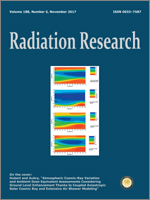While the efficacy of a protracted zinc (Zn)- or calcium (Ca)-diethylenetriaminepentaacetic acid (DTPA) treatment in reducing transuranic body burden has already been demonstrated, questions about therapeutic variables remain. In response to this, we designed animal experiments primarily to assess both the effect of fractionation of a given dose and the effect of the frequency of dose fraction, with the same total dose. In our study, rats were contaminated intravenously with plutonium (Pu) then treated several days later with Ca-DTPA given at once or in various split-dose regimens cumulating to the same total dose and spread over several days. Similar efficacies were induced by the injection of the total dose or by splitting the dose in several smaller doses, independent of the number of doses and the dose level per injection. In a second study, rats were pulmonary contaminated, and three weeks later they received a Ca-DTPA dose 11-fold higher than the maximal daily recommended dose, administered either as a single bolus or as numerous multiple injections cumulating to the same dose, based on different injection frequency schedules. Independent of frequency schedule, the various split-dose regimens spread over weeks/months were as efficient as single delivery of the total dose in mobilizing lung plutonium, and had a therapeutic advantage for removal of retained hepatic and bone plutonium burdens. We concluded that cumulative dose level was a therapeutic variable of greater importance than the distribution of split doses for the success of a repeated treatment regimen on retained tissue plutonium. In addition, pulmonary administration of clodronate, which aims at killing alveolar macrophages and subsequently releasing their plutonium content, and which is associated with a continuous Ca-DTPA infusion regimen, suggested that the efficacy of injected Ca-DTPA in decorporating lung deposit is limited, due to its restricted penetration into alveolar macrophages and not because plutonium, as a physicochemical form, is unavailable for chelation.
How to translate text using browser tools
25 September 2017
Decorporation Approach after Rat Lung Contamination with Plutonium: Evaluation of the Key Parameters Influencing the Efficacy of a Protracted Chelation Treatment
Olivier Grémy,
Sylvie Coudert,
Daniel Renault,
Laurent Miccoli
ACCESS THE FULL ARTICLE

Radiation Research
Vol. 188 • No. 5
November 2017
Vol. 188 • No. 5
November 2017




